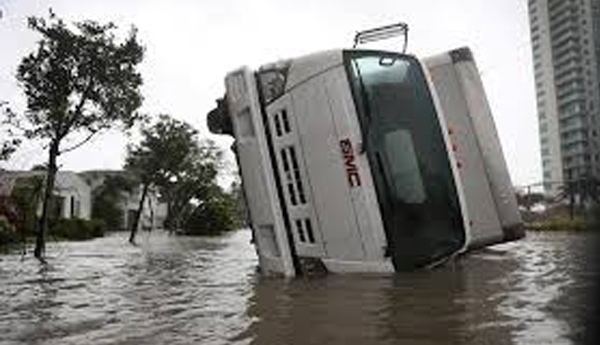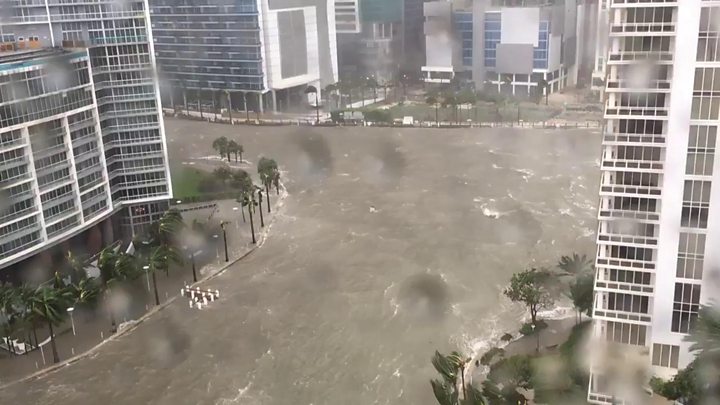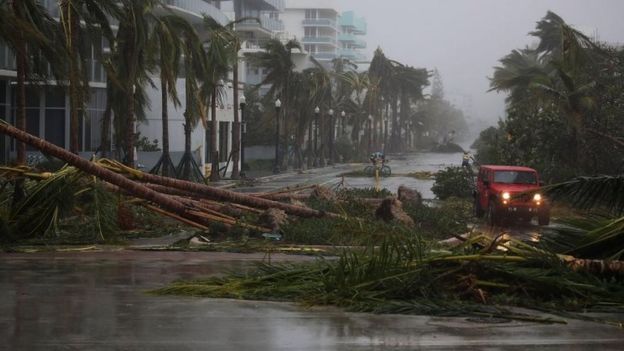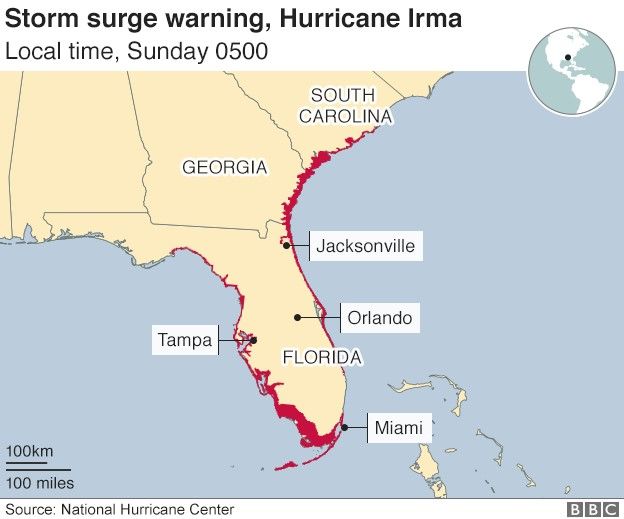Hurricane Irma: Storm Hits West Coast of Florida
Hurricane Irma is blasting up the west coast of Florida and is now bearing down on the city of Tampa.
Irma made landfall on Marco Island off Florida’s west coast with winds of up to 120mph (192km/h), but has since been downgraded from category three to two.
More than 3.4 million homes in the state are without power, and parts of the city of Miami are under water.
Three storm-related deaths have been reported, as Irma moves northwards.
In its latest update at 03:00 GMT Monday, the National Hurricane Center (NHC) says “hurricane conditions are continuing across portions of the central Florida peninsula”.
Irma currently has maximum sustained winds of 100mph (160km/h), the NHC says.
The storm was earlier pummelling the area around the city of Fort Myers.
Irma has already devastated parts of the Caribbean, killing at least 28 people.
Some 6.3 million people in Florida had been told to evacuate.
President Donald Trump has approved a major disaster declaration and emergency federal aid for Florida.
He described the hurricane as a “big monster”, praising the federal agencies involved with the storm and saying he would go to the state “very soon”.
“We may have been a little bit lucky in that it went on the west, and it may not have been quite as disruptive, but we’re going to see, it’s going to play out over the next five or six hours,” Mr Trump added.
Where is the storm now?
At 03:00 GMT, the centre of the hurricane was about 50 miles (80km) south-east of the city of Tampa.
Some 3m people live in the Tampa Bay area. The region has not been hit by a major hurricane since 1921.
Irma is now losing strength, the NHC says, predicting that Irma will become a tropical storm over “far northern Florida or southern Georgia on Monday”.
“On the forecast track, the centre of Irma will continue to move over the western Florida peninsula through Monday morning and then into the south-eastern United States late Monday and Tuesday.”
The storm made landfall at Marco Island at 15:35 local time (19:35 GMT).
The NHC earlier tweeted that people in the area of Naples and Marco Island should move away from the coast as storm surges of up to 15ft were possible.
There has been some flooding in the centre of Naples but it is believed to be fresh water.
How did it arrive in Florida?
After leaving the coast of Cuba, Irma barrelled through the Florida Keys, a chain of low-lying islands to the south, on Sunday morning.
Media reports say a man was killed on Saturday in the Keys when his truck crashed into a tree as the outer bands of the storm arrived.
The whole of the southern tip of Florida has seen high winds, driving rain and storm surges.
About 2ft (60cm) of water has been seen in Miami’s financial district, where one major street resembled a river, but the worst damage is expected on the west coast.
Two cranes have collapsed in high winds in the city.
Which other areas have already been hit?
Irma is the most powerful Atlantic storm in a decade, and has already caused widespread destruction on several Caribbean islands:
-
Cuba: Officials have talked of “significant damage”, without giving further details, but no casualties have been reported. Electricity is out across the capital, Havana
-
St Martin and St Barthelemy: Six out of 10 homes on St Martin, an island shared between France and the Netherlands, are now uninhabitable, French officials say. They said nine people had died and seven were missing in the French territories, while four are known to have died in Dutch Sint Maarten
-
Turks and Caicos Islands: Widespread damage, although extent unclear
-
Barbuda: The small island is said to be “barely habitable”, with 95% of the buildings damaged. Antigua and Barbuda Prime Minister Gaston Browne estimates reconstruction will cost $100m (£80m). One death has been confirmed
-
Anguilla: Extensive damage with one person confirmed dead
-
Puerto Rico: More than 6,000 residents of the US territory are in shelters and many more without power. At least three people have died
-
-
US Virgin Islands: Damage to infrastructure was said to be widespread, with four deaths confirmed
-
Haiti and the Dominican Republic: Both battered by the storm, but neither had as much damage as initially feared
Courtesy : bbc


 Image captionA vehicle passes downed palm trees in Miami
Image captionA vehicle passes downed palm trees in Miami


